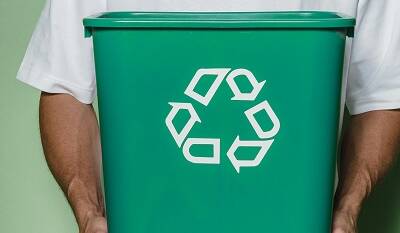Recycling Drop Off Locations: A Guide to Proper Waste Disposal
Recycling dropoff locations play a crucial role in promoting environmental sustainability. These sites are specifically designated areas where individuals can bring their recyclable materials, ensuring that waste is processed correctly and reducing landfill contributions. Understanding where these locations are and what materials are accepted can empower community members to make greener choices.
Many communities offer various types of drop-off centers, including municipal facilities and private centers that cater to specific recyclables. By utilizing these resources, residents can contribute to a circular economy and support local recycling initiatives. It’s vital for individuals to stay informed about their local options to maximize their recycling efforts.
Finding a recycling drop-off spot is often easier than it seems. Many towns and cities provide online directories or maps outlining where people can recycle various materials. Engaging with these programs not only helps the environment but also fosters a sense of responsibility and community involvement.
Understanding Recycling Drop-Off Locations
Recycling drop-off locations serve as essential points for communities to participate in recycling efforts. These sites provide residents with accessible ways to responsibly dispose of recyclable materials, thereby promoting environmental sustainability.
Purpose and Importance
The primary purpose of recycling drop-off locations is to encourage community participation in recycling programs. They serve as convenient gathering points where individuals can drop off items that can be recycled instead of sending them to landfills.
These locations reduce the barriers associated with recycling, such as the need for curbside pickup. They also help facilitate the collection of materials that might not be accepted in regular waste collection services. By having easy access to these sites, communities can significantly increase their recycling rates, leading to a reduction in waste and environmental impact.
In addition, they promote public awareness about recycling practices and the importance of sustainable waste management. Through education and accessibility, these locations foster a culture of recycling, making it a standard practice within the community.
Types of Recyclable Materials Accepted
Recycling drop-off locations typically accept a variety of materials, but acceptance can vary by site. Commonly accepted items include:
- Paper products: newspapers, magazines, and cardboard.
- Plastics: containers labeled with recycling codes #1 (PETE) and #2 (HDPE).
- Metals: aluminum cans and tin cans.
- Glass: clear, green, and brown glass containers.
It is crucial for individuals to check what specific materials a location accepts, as guidelines can differ. Some sites may also have programs for electronic waste or textiles.
Contamination can hinder the recycling process. Therefore, it is important that recyclable materials are clean and free of food residues before being dropped off. Awareness of what can and cannot be recycled helps maintain the efficiency and effectiveness of recycling programs.
Finding and Using Drop-Off Locations
Finding recycling drop-off locations and understanding their use is essential for effective recycling practices. This section addresses how to locate facilities, prepare recyclables, and follow guidelines for drop-offs.
Locating Nearby Facilities
Several resources are available to help find nearby recycling drop-off sites. Online tools like local government websites or recycling organization directories offer searchable databases. Many municipalities also provide maps of recycling locations, which can be accessed through their websites or mobile apps.
Local waste management companies often display drop-off options on their platforms. Community bulletin boards or social media groups may also list nearby facilities, fostering local engagement. It can be beneficial to contact the local recycling coordinator for specific site recommendations.
Preparation of Recyclables
Proper preparation of recyclables ensures they meet facility requirements. Materials should be clean, dry, and sorted by type. For example, plastics should be rinsed to remove food residues, while paper products should be free from contamination, like grease or oil.
Certain items may require additional steps, such as removing caps from bottles or breaking down cardboard boxes. Many facilities provide specific instructions on their websites about accepted materials. Familiarizing oneself with these guidelines promotes efficient recycling and reduces contamination.
Drop-Off Guidelines and Hours
Each recycling drop-off facility may have unique guidelines and hours of operation. Most places designate particular days or hours for drop-offs, often adjusting for holidays. It’s critical to verify these details prior to visiting.
Additionally, some facilities may have restrictions on the types of materials they accept at certain times. For example, electronics or hazardous waste might only be accepted during special events. It is advisable to check the facility’s website or contact them directly to ensure compliance with all requirements before arriving.
Copper Stock: Analyzing Market Trends and Investment Potential in 2025
Investors seeking to diversify their portfolios often consider copper stock as a viable op…















